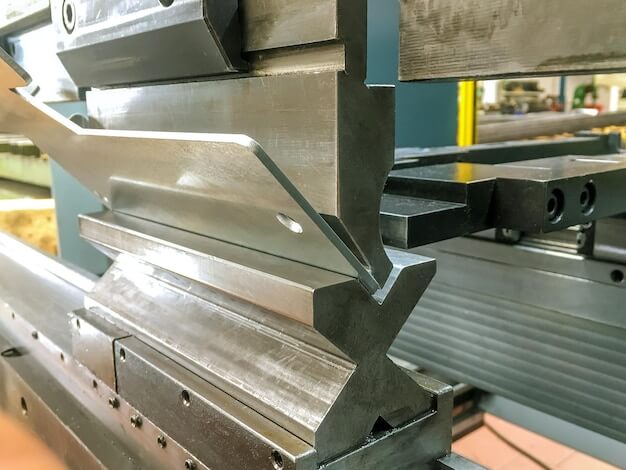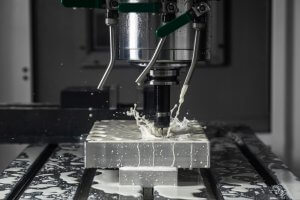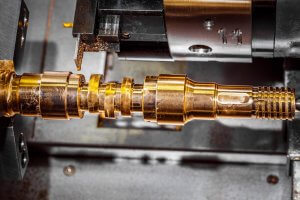Introduction to CNC Lathe Machining
CNC lathe machining, or Computer Numerical Control lathe machining, is a modern method of metal fabrication that allows for the precision crafting of complex parts and components. This computer-controlled process manipulates cutting tools to shape material as determined by inputted instructions, drawing from digital files or programmed data for exactness in design replication. In CNC machining, one crucial factor impacting the accuracy and quality of final products is the type of metal used. There are various types of metals that can be served this purpose but among them aluminum and brass are most common.
aluminum cnc machining service
The choice between using aluminum and brass depends on specific factors like project requirements, desired degree of precision, durability needs, and cost considerations. These variables highlight the importance of selecting the right metal in achieving high-level precision in CNC lathe machining. For instance, while aluminum is renowned for its lightweight property and high strength-to-weight ratio – attributes valuable in applications like automobile parts manufacturing – brass offers superior machinability and corrosion resistance, making it ideal for plumbing and electrical hardware fittings. Thus, understanding each metal’s properties and advantages becomes critical in ensuring an optimal outcome in the precise construction of parts via CNC lathe machining.
Overview of Aluminum and Brass Use in Manufacturing
Both aluminum and brass are prominently utilized in manufacturing due to their distinctive characteristics. Aluminum, known for its lightweight nature and excellent corrosion resistance, makes it a popular choice for many applications such as aircraft components, automotive parts, window frames, and kitchen utensils.
- Aircraft Components: Known for its strength-to-weight ratio, aluminum is commonly used in the production of aircraft where weight reduction without compromising strength is paramount.
- Automotive Parts: In the automotive industry, aluminum’s rust-resistant properties ensure longevity and durability of various parts ranging from engines to body panels.
- Window Frames & Kitchen Utensils: Its sturdiness, malleability, and aesthetic appeal make it suitable for crafting durable window frames and visually-appealing kitchen utensils.
On the other hand, brass serves well in situations where low friction is important like gears, doorknobs, and valves because of its softness, workability, and ability to withstand high temperatures without losing shape or melting.
- Gears: Gears manufactured from brass offer superior machine compatibility due to the metal’s anti-friction properties.
- Doorknobs: Being robust yet easy to mould, brass is often chosen for producing sturdy, long-lasting doorknobs.
- Valves: Valves, especially those used in plumbing systems, benefit from brass’ resilience under extreme temperatures and resistant to water damage.
Understanding Properties of Aluminum
The properties of aluminum make it an exceptional material for precision in CNC lathe machining. Primarily, its high strength-to-weight ratio offers the potential to construct sturdy but lightweight components. Its innate malleability and ductility enable high-precision shaping, while its excellent conductivity supports efficient heat dissipation reducing wear on machining tools. Unlike brass, aluminum does not produce hazardous chips during machining, making it safer and cleaner to work with.
- Malleability: Allows for intricate shapes or thin walls that can’t be achieved easily with other metals. This is favorable when crafting complex designs such as aircraft parts.
- Thermal Conductivity: High thermal conductivity makes it ideal for applications where rapid heat dispersion is needed, like electronic housing units.
- No Hazardous Chips: The absence of hazardous chips reduces risks related to health safety and environment cleanliness, a constant issue in industrial settings.
Consequently, these unique properties push industries, particularly automotive and aerospace, toward favouring aluminum over brass in precision-laden CNC lathe machining environments.
Understanding Properties of Brass
Brass exhibits the following properties:
- Malleability
- Corrosion resistance
- Aesthetically pleasing appearance
- Easy machining
- High tensile strength
- Excellent electrical conductivity
Technical Comparison Between Aluminum and Brass In CNC Lathe Machining
In the field of CNC lathe machining, material selection plays a paramount role in determining precision. Specifically, aluminum and brass are commonly used due to their unique properties. Starting with aluminum, it’s much lighter with exceptional thermal conductivity and corrosion resistance, making it an ideal choice when dealing with intricate designs requiring high-speed cutting. Further, it’s easier to machine because it produces small sized chips during cutting, which leads to lesser tool wear, thus increasing the level of precision achievable.
On the other hand, brass is known for its impressive machinability and low friction coefficient. It has a relatively softer composition allowing shorter cycle times, meaning more parts can be created without compromising on precision. Plus, it retains excellent heat radiation yet resists deformation under temperature changes – a critical factor in preserving part dimensions over time. However, compared with aluminum, brass is denser and somewhat tougher on machining tools which might affect precision through longer-term use.
| Aluminum | Brass | |
|---|---|---|
| Weight | Lighter | Denser |
| Machinability | Easier, produces small chips | Excellent but tougher on tools |
| Thermal Conductivity | High | Average |
| Corrosion Resistance | High | Average |
| Responsiveness To Temperature Changes | Sensitive | Resistant |
Case Study: Industrial Instance Comparing Aluminum and Brass Usage in CNC Lathe Machining
In the field of precision machine engineering, materials like aluminum and brass are frequently put to the test. For instance, consider an industrial plant requiring high-precision parts for its machinery assembly line. Initially, they opted for brass due to its excellent machinability, but it soon became evident that the metal didn’t quite meet all their strict requirements.
- The selection process involved considering factors such as strength, weight, cost-efficiency, compatibility with chemicals used, thermal considerations and most importantly, precision machining capabilities.
- Though brass exhibited higher machinability, corrosion resistance and a dense structure suitable for fine detailing, these benefits were offset by other shortcomings.
- Brass’s heavy weight, comparatively higher costs and poor thermal conductivity – a disadvantage in high-speed machining processes where heat dissipation is crucial, prompted the decision makers to reconsider their initial preference.
This led them to opt for aluminum which, despite having slightly lower machinability than brass, offered better results overall when precision was paramount. Its lightweight nature, excellent heat dissipation properties, superior corrosion resistance, mechanical strengths and cost-effectiveness justified its use over brass in this context. Thus, while both metals have their merits within CNC lathe machining, aluminium proved more fitting when precise parts production was required on a large scale.
Expert Opinions on Aluminum vs. Brass in CNC Lathe Machining
The debate between using aluminum or brass in CNC lathe machining continues to be a topic of significant interest among industry experts. Their opinions largely depend on the specific scenarios. According to Joey Collins, a veteran machinist at Advanced Machinery Enterprises, aluminum is well-liked due to its lightweight nature and excellent conductivity. It’s ideal for applications requiring rapid heat dispersion, such as in aviation and power transmission components.
- “Aluminum allows faster spindle speeds, which improves productivity rates,” Collins explains.
In contrast, John Evans, an experienced material engineer at SharpEdge Engineering Ltd.,validates that brass carries an inherent resistance against corrosion and displays superior thermal conductivity than many other metals including Aluminum. Therefore, it serves well for applications involving water exposure or high temperature like plumbing fixtures and musical instruments.
- “Brass provides exceptional durability coupled with aesthetic value,” Evans adds up.
These diverse views amplify that the choice between aluminum and brass depends chiefly on the specific end-use requirements & conditions. Hence, careful consideration should always precede the final selection.
Related Posts
- CNC Machining Aluminum vs. Brass: A Detailed Comparison for Precision Parts Manufacturing
Introduction to CNC Machining and Material Choices CNC (Computer Numerical Control) machining is a critical process in precision parts manufacturing. Its importance lies in its ability to create intricate and…
- Precision CNC Machining: Aluminum vs. Brass - Deciding on the Ideal Metal for Your Project
Introduction to Precision CNC Machining and Metal Choices Precision CNC Machining is a crucial technique in the manufacturing industry, leveraging the power of computers for highly accurate and efficient product…
- Precision CNC Machining: Aluminum vs. Brass for Your Custom Parts
Introduction to Precision CNC Machining and Custom Parts Precision CNC (Computer Numeric Control) machining is a cutting-edge manufacturing process that utilizes computer-controlled machinery to produce intricately designed custom parts, adhering…
- Choosing Between Brass C36000 and C37000 for Precision CNC Machining
Introduction to Precision CNC Machining and its Significance in Manufacturing Precision CNC machining is a manufacturing process that utilizes computerized controls for operating various machine tools such as lathes, mills,…
- Elevating Precision Standards through Chamfer in CNC Machining
1. Introduction: The Pursuit of Unparalleled Precision In the realm of CNC machining, precision is paramount. This section introduces the article by exploring the significance of precision in manufacturing and…
- CNC Machining Aluminum vs. Brass: A Detailed Comparison for Precision Parts Manufacturing
CNC Machining: Aluminum vs. Brass in Precision Parts Manufacturing The continuous quest for efficiency and precision has made CNC (Computer Numerical Control) machining a vital process in the manufacturing of…








